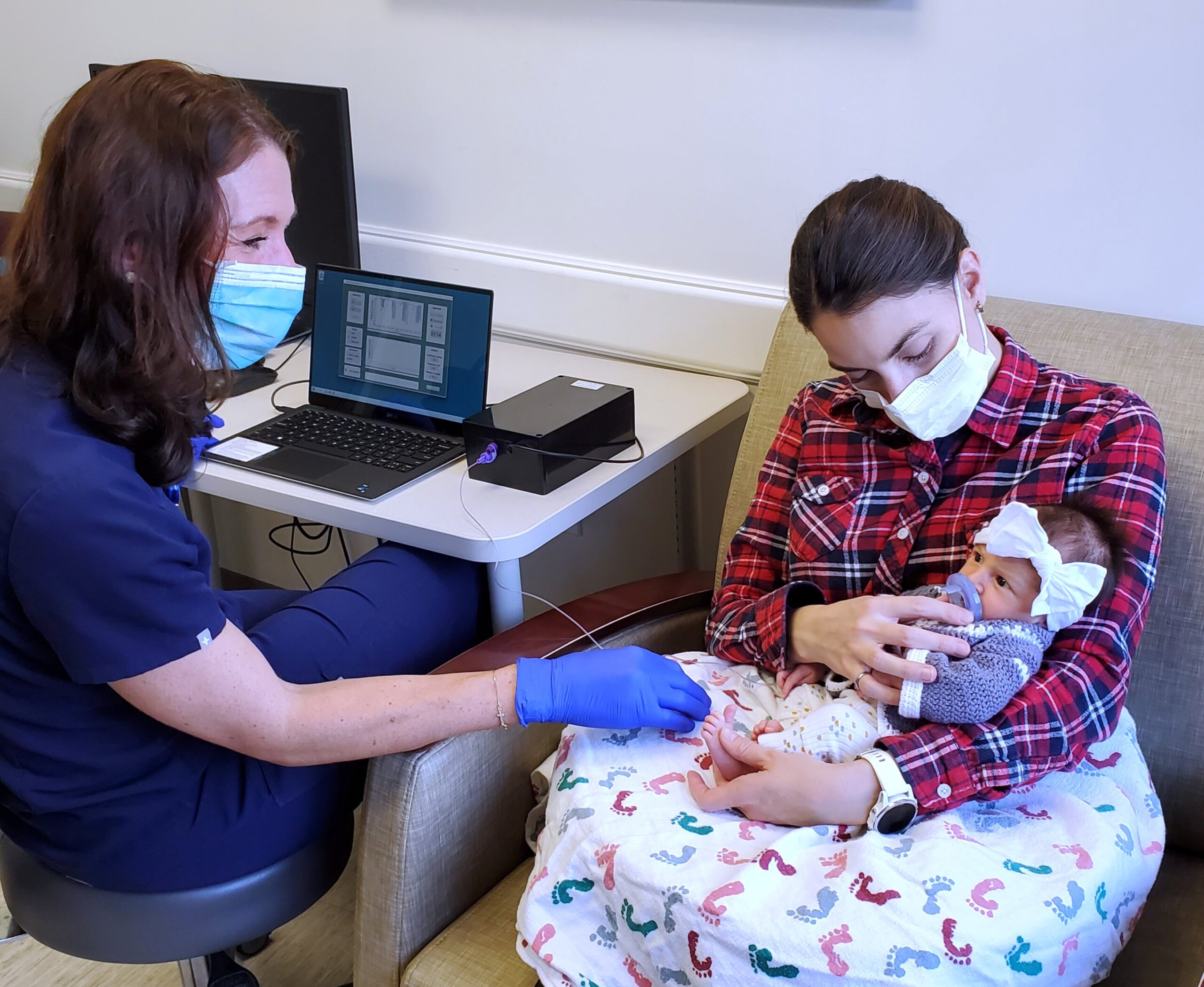This device identifies infants who may have difficulties with breastfeeding

Doctors traditionally use a finger to assess a baby’s suckling ability, but researchers at UC San Diego have developed a new method to more accurately measure a child’s suckling performance.
Led by engineer James Friend, a team at the university’s Medically Advanced Devices Laboratory created a “non-nutritive suckling system” by attaching a digital vacuum sensor to a standard disposable pacifier. This setup allows for real-time continuous measurement of suckling for up to 60 seconds.
“We established normative data for various suckling parameters such as mean suck vacuum, maximum suck vacuum, suckling frequency, burst duration, sucks per burst, and vacuum signal shape,” the authors explained. They utilized sophisticated statistical analysis and machine learning to analyze patterns from data collected from 91 babies using the device.
One might question the significance of such detailed measurements of a basic human reflex. Co-author Erin Walsh, a speech pathologist and lactation consultant at UC San Diego’s Center for Voice and Swallowing, highlighted that measuring sucking force can aid in the detection of ankyloglossia, commonly known as “tongue-tie.” This condition, caused by a restrictive lingual frenulum under the tongue, limits tongue movement and reduces the maximum suckling ability of a baby.
When tongue-tie is believed to be causing breastfeeding challenges, doctors may perform a minor surgical procedure known as frenotomy to clip the tissue and improve tongue movement. However, there has been recent debate within pediatric medicine about whether this procedure is being overly prescribed.
The efforts at UC San Diego are not the first to try to measure the sucking power of babies. For instance, a team in Italy used pressure sensors linked to a pacifier for force measurement, publishing their findings in 2015. Similarly, Korean researchers utilized a pressure sensor in 2023 for similar measurements. However, the UCSD study noted that previous work had mainly focused on premature babies, who often receive nutrients through feeding tubes, leaving clinicians uncertain about when these infants are ready to transition to bottle or breastfeeding. Data from the babies in the UC San Diego study revealed some outliers with lower-than-average sucking force and detected an increase in vacuum power after frenotomy. However, measurements also indicated minimal improvements for those with normal force levels who underwent frenotomy, suggesting that some of these surgeries may be unnecessary.
It’s worth noting that tongue-tie is estimated to affect only around 7 percent of births.
Friend suggested that using a sensor to quantify vacuum force could have broader applications in quickly diagnosing the underlying cause of breastfeeding difficulties shortly after birth.
“The hope is that something like this would provide concrete data that would help clinicians identify if there will be any issues with suckling,” Friend remarked. “It can be very frustrating to identify what’s going wrong.”
Walsh concurred with this assessment.

